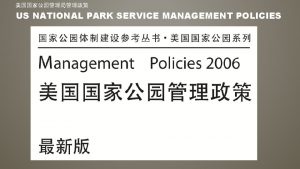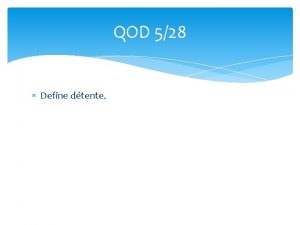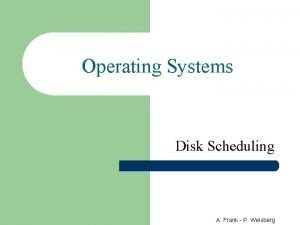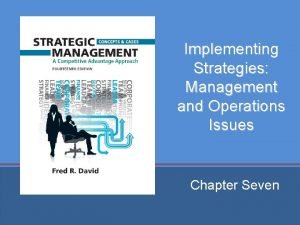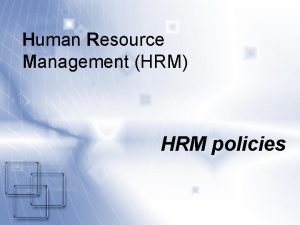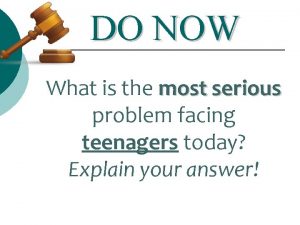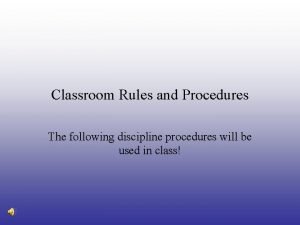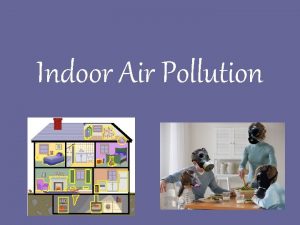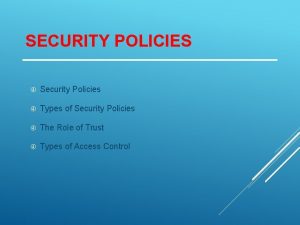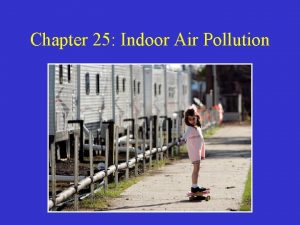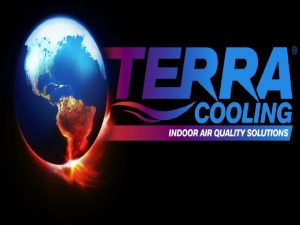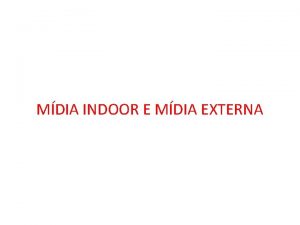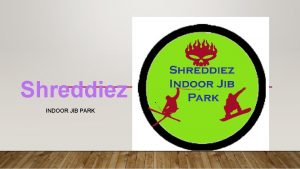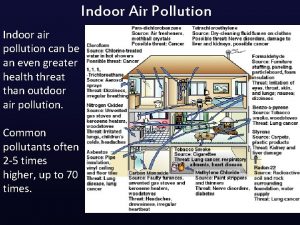Chapter Two Indoor Safety Indoor Safety Policies l






























- Slides: 30

Chapter Two: Indoor Safety

Indoor Safety Policies l l l Indoor Child Care Environments Indoor Equipment Safety Toy Safety

l l l Interpersonal Safety Poison Control Fire and Burn Prevention

Indoor Child Care Environments Examine for hazards l Falls l Choking l Burns l Drowning l Poisoning

l Environmental hazards in child care Ventilation Ø Pets or animals Ø Cleaning supplies Ø l Safety devices needed

Developmental level l Infants Ø l Relatively helpless choking Toddlers Ø Group with most potential for unsafe practices poisons

l Preschoolers Ø l Greater physical and cognitive abilities falls School Age Ø Relatively safe indoors, but firearms may be risk

Space l Recommended indoor space is 35 square feet per child Does not include kitchen, bathroom, closets, laundry facilities, or staff space Ø Usually translates to 50 square feet when furnishings are considered Ø Adequate floor space essential for prevention of injury Ø

Shared Space l l Multiple-use facilities need thoughtful anticipation for risk Screening checklist Remove Ø Replace Ø

Indoor Safety Equipment should be l l Sturdy Free of sharp points or corners, splinters, protruding nails or bolts Free of loose, rusty parts, hazardous small parts, or paint that contains lead Durable

l l Easy to clean Child-sized, where appropriate Equipment should allow flow of movement Comply with standards Ø Cribs, high chairs, strollers, safety gates

l Preventing falls Ø l Checklist (Table 2 -3) Indoor water safety Toilets Ø Standing water Ø Hot water heaters (less than 120 degrees F) Ø

Toy Safety Choking and suffocation hazards l Toys, food, and small objects Examine for age appropriateness l l Developmental level, safety precautions Appropriate toys (Table 2 -6)

Art supplies l Federal Arts Materials Act of 1990 Ø l Hazard free art materials label AP or CP Common household products Toy Safety Checklist (Table 2 -7)

Interpersonal Safety Injuries from biting, kicking, scratching, and fighting common Caregivers should l l Be prepared to intervene Understand behavior Know strategies for eliminating and preventing behavior Know how to use conflict resolution

Exposure to violence l l Television, street, neighborhoods, homes High degree of exposure can cause posttraumatic stress disorder Ø l Can cause a child to relive violence in play Caregiver needs to observe, communicate, and redirect

Poison Control Most common emergency involving children l Children under four are most likely to ingest poison Examining the environment l l First order of prevention is caregiver vigilance in monitoring Room by room inspection

Understanding risk l l l Ingestion swallowing Contact absorbed through skin Inhalation breathing fumes Animal, insect, or reptile bites Injection puncture wound

Strategies for Promoting Poison Control l l Table 2 -11 Plants that pose risk l Common indoor plant risk (Table 2 -12)

Fire and Burn Prevention Injuries from fires and burns are 2 nd leading cause of death in children in U. S. l l l 35% of all burn injuries happen to children Scalding is chief cause of burns to preschool children Playing with matches and lighters #1 cause of fire deaths in young children

Environmental Hazards l l Scalding Electrical Contact Chemical

Strategies for Fire and Burn Prevention l Teach child fire and burn prevention Avoid matches and lighters Ø Regular fire drills Ø Stop, Drop, and Roll Ø

l Safety devices should be present Fire extinguishers Ø Smoke alarms Ø l Model safe behavior

Implications for Caregivers Observation l l Accessories, behaviors, conditions Knowledge of hazards Equipment, toys, art supplies, poisons l Awareness of unsafe interpersonal behaviors l

Supervision l Constant monitoring environment Safe practices, methods of prevention, promotion Ø Check for compliance with licensing, fire safety guidelines Ø Communication to all caregivers to ensure safe practices Ø Education l Parents, caregivers, and children

Reality Check: SIDS Safe Practices can prevent more than half of the cases l l Put babies to sleep on their backs Do not expose babies to secondhand smoke Remove all soft sleeping materials such as pillows, foam pads, etc. Do not let baby get overheated

Reality Check: Kids and Guns Serious safety issue l l l 1. 2 million children have access to guns in their homes 1 in 5 high school students carry guns or other weapons to school Children exposed to violence may carry guns to feel safe

Children’s curiosity l l l Encouraged by exposure via television/movies Toys available to play with Even if they have been cautioned not to touch them, most children will anyway

How does child caregiver help protect children from guns? l l l Family child caregivers ensure that any firearm present is kept out of sight, locked away, and kept separate from ammunition They can provide alternate forms of handling conflict in prosocial ways by conflict resolution Not allow guns in child care environment Ø Including “substitute” gun play with other items

l l Educate parents about dangers of guns Monitor programming of television, if used in child care Strategies to promote positive interaction l Table 2 -10
 Chapter 11 school policies and their functions
Chapter 11 school policies and their functions Chapter 6 supply demand and government policies
Chapter 6 supply demand and government policies Nps management policies
Nps management policies Sdlc principles and practices
Sdlc principles and practices Nixons foreign policies
Nixons foreign policies Crime control policies
Crime control policies What are policies
What are policies Bohlen-serrano agreement tagalog
Bohlen-serrano agreement tagalog Disk structure in os
Disk structure in os National policy and legislation
National policy and legislation Family planning advertisement
Family planning advertisement Macroeconomics unit 5 lesson 2 activity 45
Macroeconomics unit 5 lesson 2 activity 45 Migration ap human geography definition
Migration ap human geography definition Mao domestic policies
Mao domestic policies Macroprudential policy
Macroprudential policy Crime control policies
Crime control policies Divisional structure advantages and disadvantages
Divisional structure advantages and disadvantages What are hr policies
What are hr policies Demand side policies
Demand side policies Interventionist supply side policies
Interventionist supply side policies Eisenhower domestic policies
Eisenhower domestic policies Lesson 4 eisenhowers cold war policies
Lesson 4 eisenhowers cold war policies Demand side policies
Demand side policies Crime control policies
Crime control policies Database security policies
Database security policies Policies governing language use in the philippines
Policies governing language use in the philippines Neoclassical theory criminology
Neoclassical theory criminology Classroom policies and procedures
Classroom policies and procedures Working capital management
Working capital management Crime control policies
Crime control policies Crime control policies
Crime control policies


